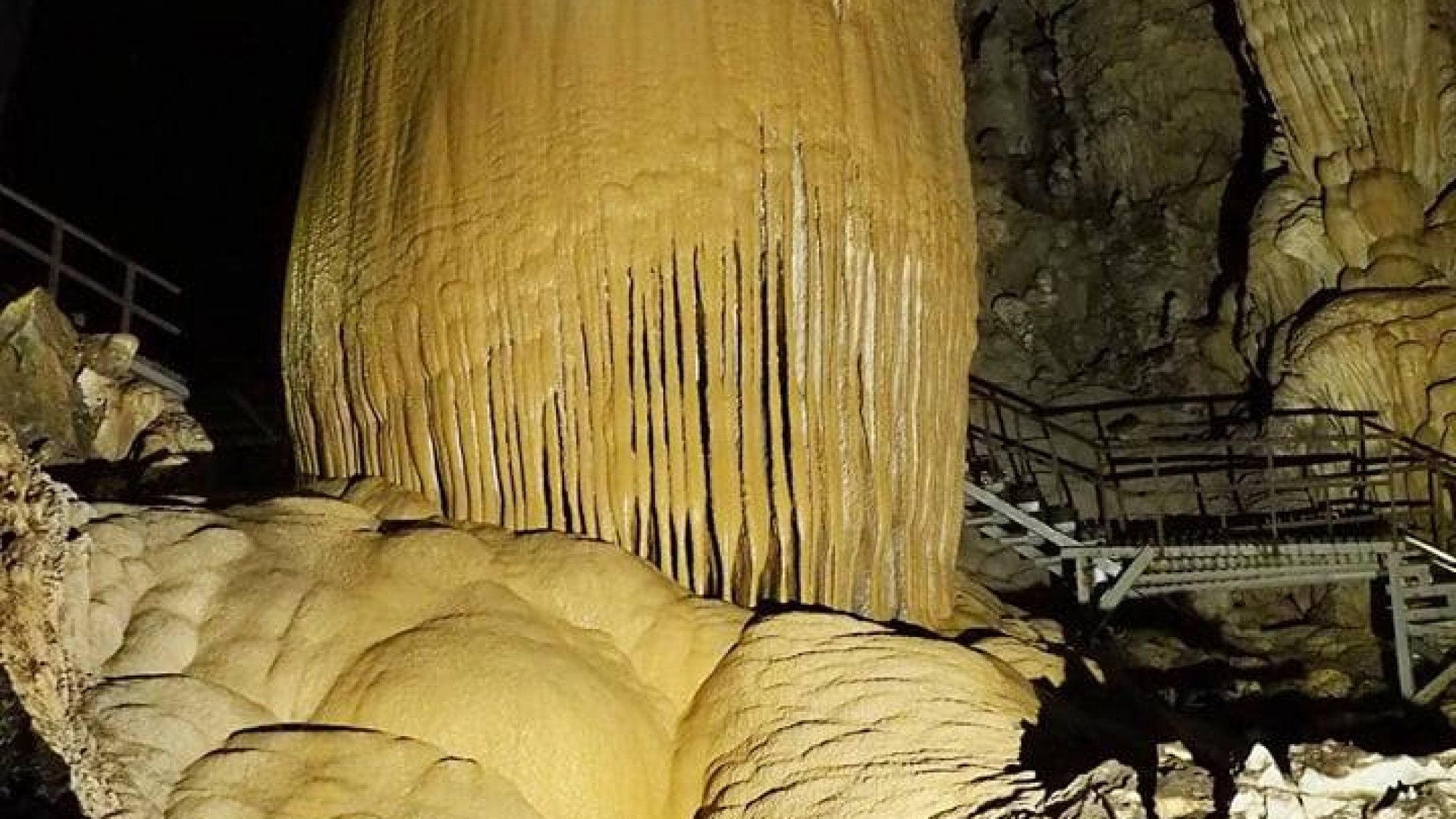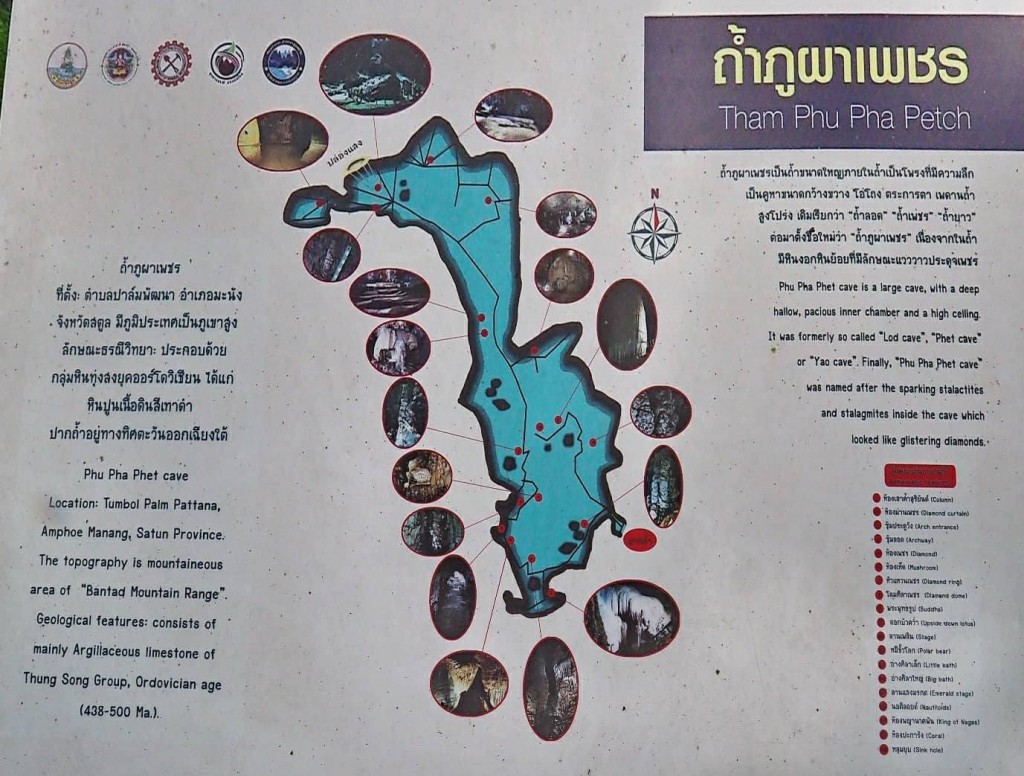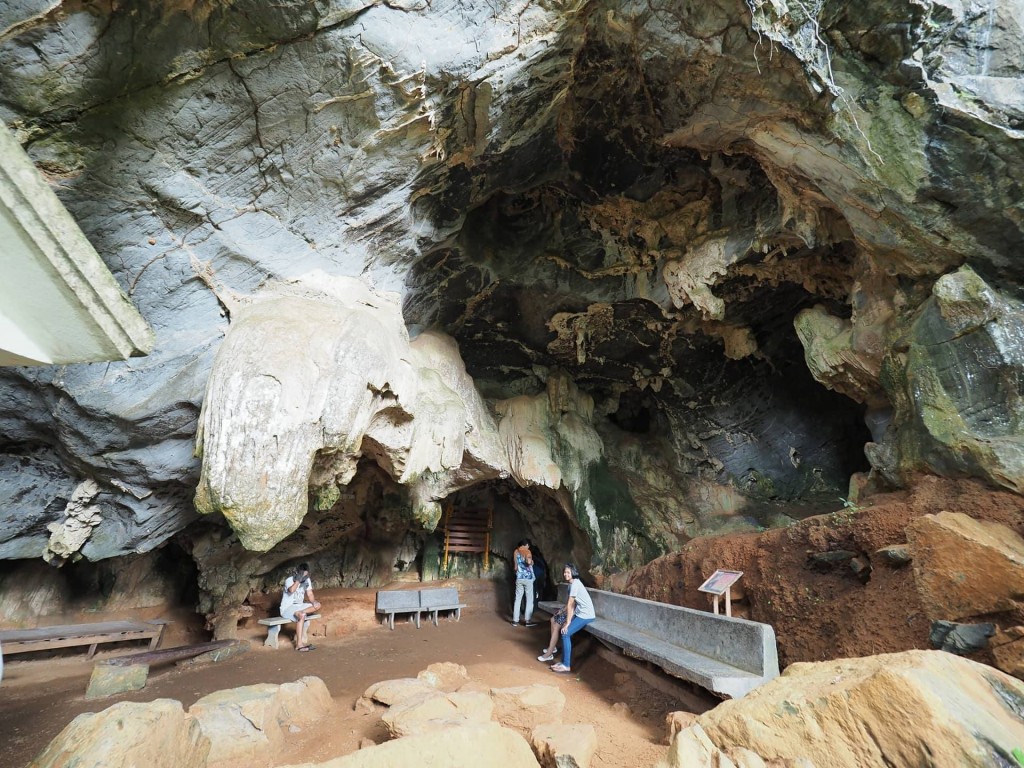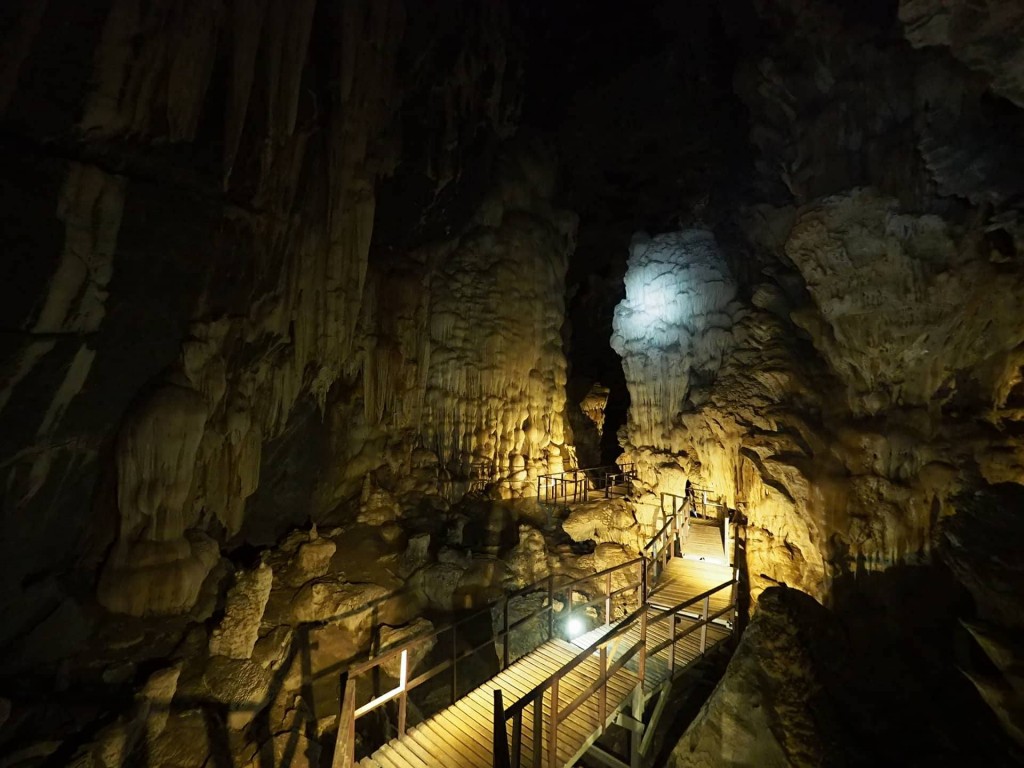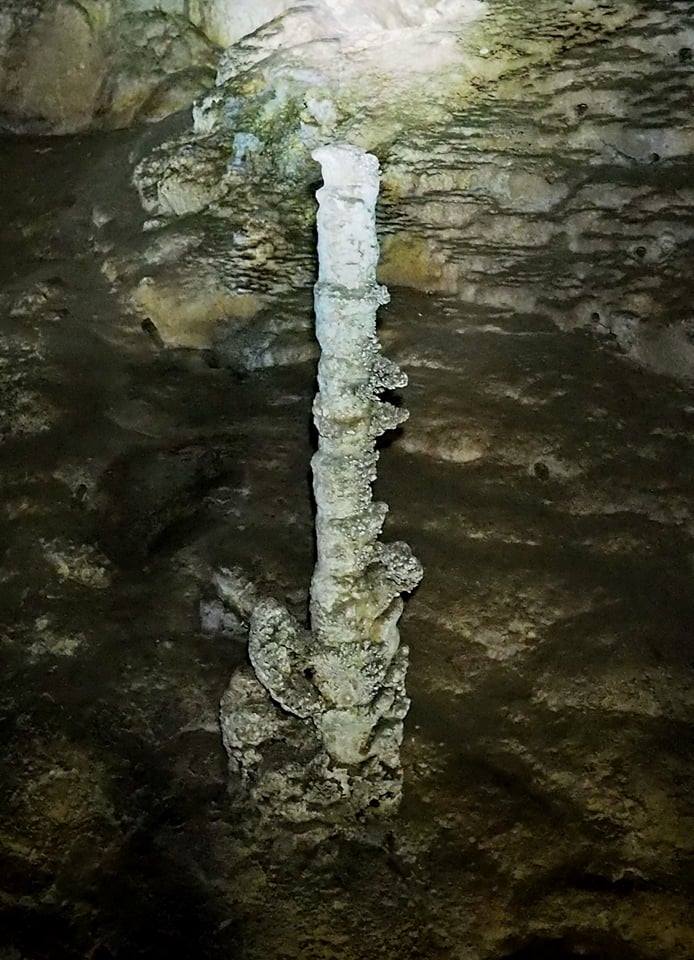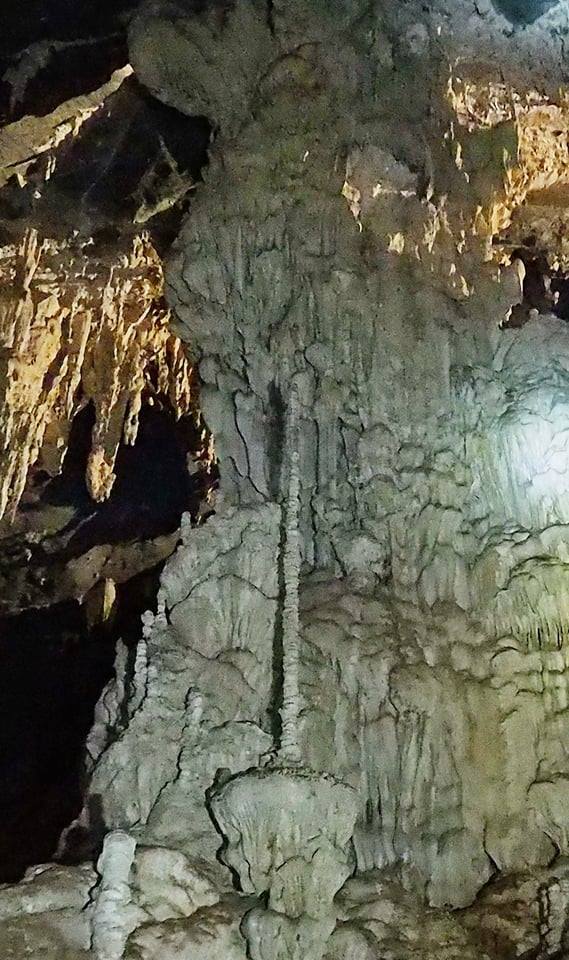Phu Pha Petch Cave is a touristic site located within the Sub-District of Palm-Pattana, District of Manung in the Province of Satun.
One of a places that can completely represent the power of natural creation. This well kept secret has only recently been exposed to international tourism and for those who enjoy some serious Eco-Tourism or love caves,also translated as the Diamond Mountain Caves.
Phu Pha Petch Cave is the largest cave in Thailand and is ranked as the world’s 4th largest cave. The cave is exceedingly spacious and has got extremely high ceiling. The stalagmites and stalactites in the cave are, most of the time, covered in due or water droplets. Once the sun gets to them, the scenery is mesmerizing. The interior of the cave is sectioned into 20 separate rooms, which are named after geology findings such as the MaanPetch (Diamond Curtain) where the stonewalls inside are formed in multiple layers. The Naga section is where stalagmites have formed on top of one another, creating an effect similar to a large snake, while the Prakarang (Coral) section of the cave showcases beautiful stalactites and stalagmites, which are formed similar to coral in the sea. Within the cave there features several forms stalagmites, dokhed (mushroom), sum pratoo (door arch), hua wan petch (diamond ring), sainampetch (stream of diamonds), hua-payanak (Naga’s head), payanakprok, sianphra (buddha’s head), dokbuakwum (upside down lotus), each named after their formation. As of stalactites, there are 4 types seen including dome shaped, jellyfish shaped, curtain form and the column in cavern. The column in cavern is seen in several places throughout the cave. Through years, there has been the formation of 14 cavern in cave namely saopetch (diamond column) and saokumsuriyan.
There are signs clearly indicating directions the whole journey. Whilst arriving at the site, visitors will have to climb 300 steps (only) to reach the actual cave. But not to worry, the steps are made from wood and are safe.
Phu Pha Phet Cave
What’s inside
Guiding before go in
The Way to start
Stop for a Pic!
Whilst arriving at the site, visitors will have to climb 300 steps (only) to reach the actual cave. But not to worry, the steps are made from wood and are safe.
ax! one of the thing that they use to open the cave
The way to go in side
Not easy!
Like a big Pavillion when you go in!
The interior of the cave occupies a large area of approximately 19.5 acres. The cave is beautifully adorned by nature’s gift, stalagmites and stalactites, which were formed since the Permian Period. In 1998, a Buddhist pilgrim named Luang Ta Plaeng discovered the cave and so a group of archaeologists from the Office of Archaeology and 10th National Museum at Songkla explored the area. Findings have proven that the cave was home for people of the prehistoric civilization. Evidence includes various items such as the skull of prehistoric human and sections of clay pottery decorated by seashells. The cave was then recognized as a touristic attraction and has constantly gained popularity through the years.
Now is time to imagine to all of stone!
Another significant type of stone formation within the cave is the stairway-like structure. Its appearance is rather similar to limestone waterfall phases. Inside this humongous cave consists of 5 stairway-structured stone formations including the ladder, the pond, the concert stage, continuing deep inside the cave is the hallow spot. At the hallowed spot within the cave, the ceiling is higher compared to other parts, giving way for light to enter. The light touching stalactites and stalagmites which are slightly glimpsed with green promises a mesmerizing view. This particular section of the cave is called emerald. The highlight of PhuPhaPetch Cave can be nowhere else but the PhuPhaPetch room. The surface of stones in this section of the cave is mostly sparkly and shiny, making an experience here promising to be remarkable.
Column (เสาค้ำสุริยัน)…. Columns are formed by the unions of stalagmites (growing from the floor) and stalactites (growing from the ceiling) that have grown enough to meet each other.
Sparkling Rim-stone(ทำนบหินปูนส่องประกาย) …..Rim-stone here is white and sparkling remarkably. The key point is calcite covering all the serface of rimstone structure. Calcite crystal is smooth like mirror, so when it is touched by light, it will get reflected glitteringly.
In planning your trip to PhuPhaPetch Cave, it is advised to bring your own torch and wear comfortable walking shoes. (Rental torches are available on site)
PhuPhaPetch Cave is open for visits daily from 08:30 to 15:30 (16:00 on public holidays)
Entrance fee is 30 Baht, but for students it is reduced to 10-20 Baht.
For further information, kindly contact the Tourist Information Office at Tel: 074-720 314 Ext. 11
#https://au.tourismthailand.org/Attraction/PhuPhaPetch-Cave–5719
#ReviewThailand #ReviewSatun #PlanVacationAsia


